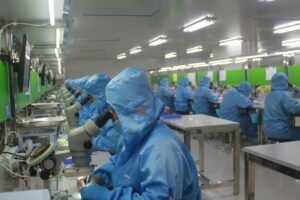In today’s fast-paced and competitive world, improving performance and work efficiency is essential to achieving success—whether in an organization or as an individual. Enhanced efficiency and productivity not only help businesses grow but also ensure that employees can complete their tasks with less stress and more focus. But how can one consistently improve performance and work efficiency in the modern work environment? Let’s explore some key strategies.
Also Read: What Is a Data Leak and Why Should You Care?
Set Clear Goals and Priorities
One of the most important steps in improving performance and work efficiency is setting clear, measurable goals. When individuals and teams understand their objectives and can visualize the path to achieving them, they become more focused and motivated.
Start by breaking down larger goals into smaller, manageable tasks. This not only helps with clarity but also boosts motivation as you check off each small win. Establishing deadlines for these tasks helps maintain a sense of urgency, while also preventing procrastination. By clearly outlining priorities, you ensure that important tasks are not sidelined, allowing you to allocate time and resources more effectively.
Embrace Time Management Techniques
Effective time management is at the heart of work efficiency. With numerous distractions and competing priorities, time can slip away before you realize it. To combat this, time management techniques like the Pomodoro Technique, the Eisenhower Matrix, or time-blocking can significantly enhance how you allocate your time throughout the day.
The Pomodoro Technique, for instance, encourages you to work for 25 minutes and then take a 5-minute break. This method helps maintain focus by breaking work into manageable intervals. Meanwhile, the Eisenhower Matrix assists in prioritizing tasks based on their urgency and importance, allowing you to focus on high-priority work first. Adopting time management techniques tailored to your workflow can drastically improve productivity and efficiency.
Minimize Distractions
Distractions, both internal and external, are one of the biggest enemies of efficiency. In the modern workplace, constant notifications, emails, and meetings can quickly derail focus. To combat this, minimize distractions by creating a dedicated, quiet workspace. Turn off unnecessary notifications on your phone and computer, or set specific times to check your email to avoid constant interruptions.
Another strategy is to set boundaries with colleagues or team members, ensuring you have uninterrupted blocks of time to concentrate on your tasks. If you’re working remotely, it might be helpful to communicate your work hours to others, minimizing the chances of distractions during critical periods.
Leverage Technology and Automation
In 2025, technology offers numerous tools designed to increase performance and work efficiency. From project management platforms like Asana and Trello to communication tools such as Slack, these technologies help streamline workflows, track progress, and foster collaboration.
Automation is another way technology can boost efficiency. By automating repetitive tasks—such as scheduling meetings, sending reminders, or generating reports—you can free up time for more value-driven activities. For instance, customer relationship management (CRM) tools can automate follow-up emails, while accounting software can handle invoicing and payment tracking automatically.
Invest in Skill Development
Continuous learning and professional development play a key role in improving long-term performance and efficiency. When employees acquire new skills or deepen their expertise, they can perform their tasks more effectively and adapt to changing demands.
Investing in skills such as communication, leadership, and problem-solving enhances your ability to handle challenges more efficiently. Attending workshops, taking online courses, or participating in training programs related to your field can help ensure that you stay at the top of your game. By constantly evolving and refining your skill set, you can achieve better outcomes and contribute to overall team success.
Foster a Positive Work Environment
A supportive and motivating work environment significantly impacts performance and efficiency. When employees feel valued and empowered, they are more likely to be engaged and produce higher-quality work.
Leaders should foster open communication, trust, and collaboration within the team. Recognizing achievements, both big and small, helps motivate employees and reinforces a positive culture. Additionally, providing flexibility and work-life balance allows employees to recharge and maintain their mental and physical well-being, contributing to sustainable productivity.
Also Read: What Are The 5 Steps To An Effective Strategic Business Plan
Conclusion
Improving performance and work efficiency is an evolving process that requires a combination of time management, clear goal-setting, minimizing distractions, and leveraging technology. By embracing these strategies and fostering a positive environment for growth, you can enhance your productivity and achieve your objectives with greater ease. With focus, discipline, and a commitment to continuous improvement, success is within reach.









